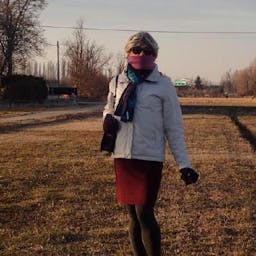When "holding hands" is just "handshaking", six are sufficient to make a turn around the World
Jan 21, 2015
Story
Shaking hands is not, decidedly, holding them and sharing deep feelings and concerns.
Yet happens!
But this post is not about frog kissing (a very difficult, yet needed activity), the semantics of the term \"friendship\" (with two popular attractors, plus some more), or anything really human. No: it's about mathematics.
And in particular, about a curious phenomenon occurring to human kind and, little doubt, any other natural population: the Small-World Phenomenon.
Let me start simple (and forgive me of any sloppiness!) (If possible...)
Imagine to pick two people at random. They will likely not know directly. (Here, \"to know\" is intended in the \"masculine sense\", that is, having had a casual interaction (positive or negative, matters quite a little), to the point of shaking hands and presenting ;-) No involvement required - otherwise what I'm about to say would be a bit different, just a little bit).
Now, imagine to get all the acquaintances of the first person (that is, people at handshake distance one). Then the acquaintances' acquaintances (distance two). And so on.
As we humans are a social species, sooner or later in the process the second person will be included.
After how many handshakes?
I tried this quiz with some of my own acquaintances, and got very different figures. Different, but always pretty high, in the order of tens, or hundreds.
Reality seems very different, however. It turned out the average distance between two people chosen at random is fairly small, equal to 6. And you can be reasonably sure no two people have distance higher than 7-8.
The reason this happens is, the graph of acquaintance has the \"small world property\".
A \"graph\" is an abstract mathematical structure used to model any kind of relationship. In its basic form, it is made of a (usually finite) set of \"vertices\", V = {v1, v2, v3, ...} connected by a set of \"edges\" E = {e1, e2, ...}. Any edge connects two vertices, chosen at will.
In our case, the set of \"vertices\" means \"people\", while the existence of an edge connecting two of them means they reciprocally know. But many other kind of relationships and objects are quite naturally expressed by graphs: just for example, an electrical network, or a road system. Or an ecological community.
If all people know each other, the number of edges would be enormous. If \"n\" is the number of people, the number of possible edges would be equal to the number of possible non-repeating couples with self-acquaintances removed. That is (after a bit of intuitive calculations)
Number of edges = n*(n-1)/2
If n = 6'500'000'000, then the number of possible edges would be the astronomical number
21'124'999'996'750'000'000
The reality is, no one of us in the world know all the other more than six billions inhabitants. So the number of actual edges is much smaller than this. Say, in the order of just ten times the overall population size.
As you drop edges from the \"complete\" graphs, chances are high that sooner or later the graph becomes \"unconnected\". That is, there will be two vertices not joined by a path within the graph.
But this does not happen, if edges are dropped (or, looking from the opposite side, created) in a sufficient random way. And the graph remains strongly connected. \"So\" strongly, in fact, that the path between any two individuals will be quite small.
This, in its essence, is the \"small world property\".
That the graph of human acquaintances has the small world property yields many interesting consequences.
For example, it helps explaining why knowledge spread so quickly. This is true of scientific discovery and urban legends as well, and had lead some creative thinkers to introduce the concept of \"meme\", a sort of knowledge analogous of genes. Memes, as genes, can fit a human in a finite amount, so they compete for \"brain space\". They spread, too, and they can do very fast thanks to the small world property. Their diffusion pattern resemble viruses'.
Real viruses are another example: many diseases spread by contact, and they do preferentially along the acquaintance graph.
(Saying that diseases follow the same path as political propaganda may sound a bit mean - but this is the mathematical reality!)
Now, what would change, if we replace the definition of acquaintance with a more restrictive (feminine?) one?
Suppose we say to \"know\" a person only if we are friend to her.
In this case, the number of edges decreases a lot, by at least one order of magnitude.
But the resulting graph has still the small world property.
In addition, this \"feminine\" graph is a subgraph of the more relaxed one we had used. So, I suspect the average distance between any two people will be again 6, or at most 7, in the \"feminine\" graph.
What's your opinion about? (Feel free! Mine is a non-informed-people, just a gut feeling. But maybe, we could simulate! It would be a nice class activity, besides.
Mauri




